A Deeper Dive Into the Blue Paradox Exhibit on Plastic Pollution Crisis
The plastic paradox captures plastic's dual nature: highly useful and versatile, yet a challenge to the environment. Plastics help innovate industries and enhance convenience, but they can also contribute to ocean pollution.
Initiatives like the Blue Paradox exhibit on the plastic pollution crisis invites the public to walk underneath the ocean’s surface and experience the depth of problems facing our ocean and waterways. From the colorful reefs of tropical waters to Great Lakes of the Midwest, the plastic pollution crisis has reached a tipping point...
But what exactly is the Blue Paradox and why is it a must-see experience?
The Blue Paradox
Addressing the challenges of ocean plastic
Presented by SC Johnson and Conservation International, The Blue Paradox launched in 2021 as an immersive pop-up in London aiming to make the ocean plastic crisis relatable to all. This sold-out event resonated with attendees, resulting in 97 percent of attendees planning to make lasting behavior change. Building on this success, SC Johnson and Conservation International collaborated to bring this impactful experience to the Museum of Science and Industry, Chicago (MSI).
The 5-room exhibit takes visitors beneath the ocean’s surface and fully immerses them in the paradox of the plastic pollution crisis. Each room serves a unique purpose in understanding the depth of this problem and how we need collective action from all parties involved – governments, businesses and consumers – to turn the tide against the plastic waste crisis.
Lead-In Corridor
In the Lead-In Corridor, guests will discover 1,278 plastic fish hanging overhead. These fish, made from recycled plastic, are part of a large sculpture called “Emergence” by Aurora Robson, who is known predominantly for her meditative work intercepting the plastic waste stream. The sculpture is made from ultrasonic welded plastic debris, water-based paint, recycled fishing line and lead weights.
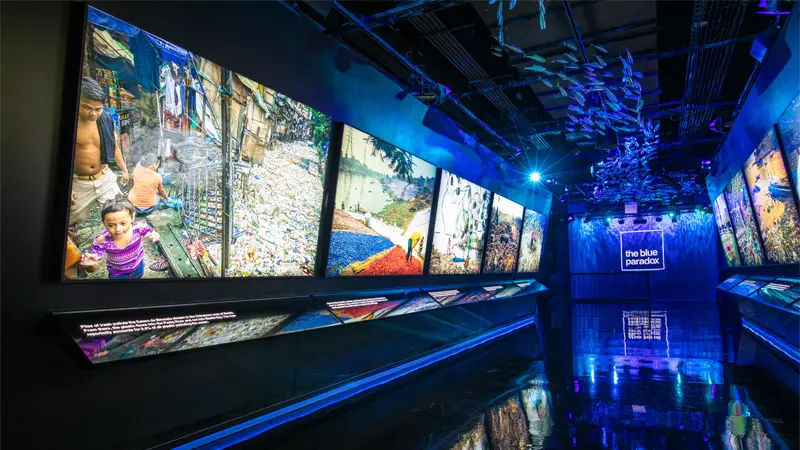
Guests will also be greeted by a stunning photo gallery from National Geographic Photojournalist Randy Olson, which help individuals understand the gravity of the ocean plastic pollution problem impacting both communities around the world and marine species.
Entrance
Guests will enter the exhibit by symbolically descending into the ocean. As they progress from one end of the hallway to the other, guests feel as if they are under the surface of the ocean. Beautiful and ethereal refractions will play across the walls and surfaces—drawing them deeper into the experience.
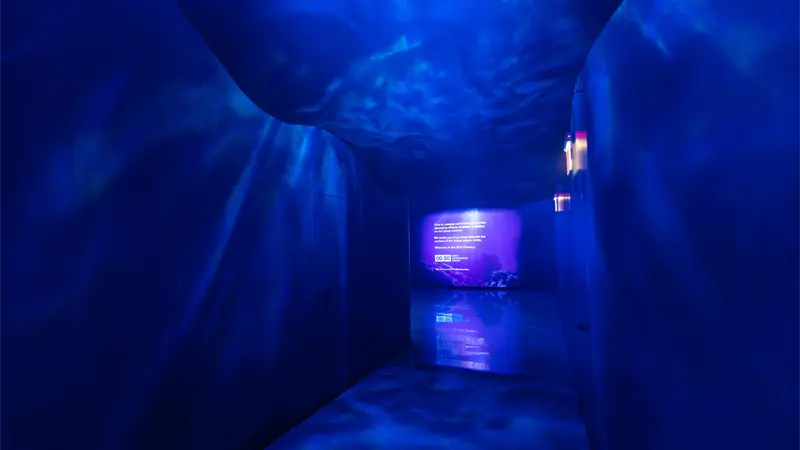
Room 1: The Role of Our Ocean
To understand the depth of this problem, guests must first understand the role our ocean plays in our daily lives.
In the first room of the exhibit, guests will become immersed in an LED Wave Wall of ocean imagery—from colorful coral reefs to mesmerizing swarms of jellyfish. Here, they will learn about and visualize the ocean’s role for our planet.
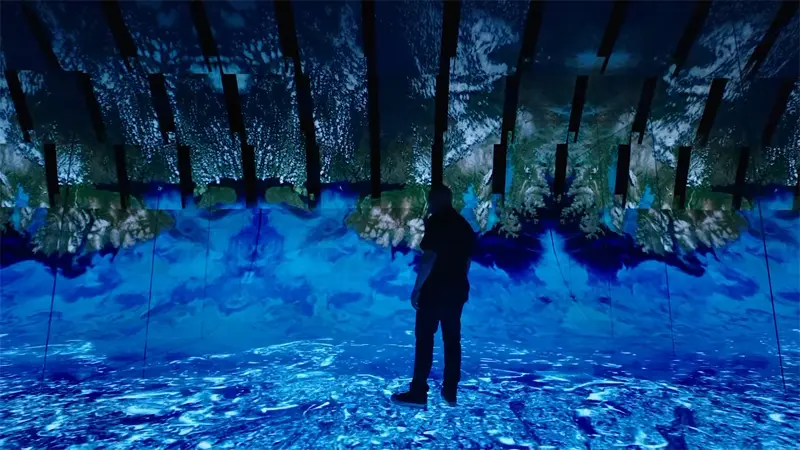
Room 2: The Problem & Impacts
Life on Earth depends on our oceans. The sheer volume of plastics reaching the ocean has grown to impact marine life, ecosystems and food chains all around the world. And since plastics can take hundreds of years to decompose, the issue is not going away on its own anytime soon.
But the first step to solving a problem of this immense scale is to understand it.
Through maps and graphics, guests will learn where plastic pollution exists geographically, which countries are the biggest contributors, the abundance of pollution in the ocean and more.

Room 3: The Plastic Paradox
The third experiential room of the exhibit highlights why the exhibit is called The Blue Paradox. While the widespread use of plastic in our daily lives has led to considerable advancements in modern society, plastic has also become one of the most pervasive pollution issues facing our ocean ecosystem and the planet.
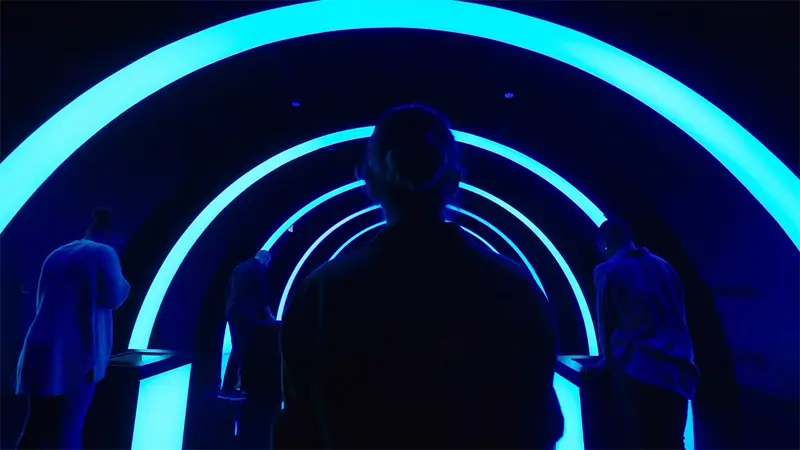
Interactive and fully accessible kiosks allow guests to dive deeper into the plastic pollution problem and start to understand where solutions exist. The room describes how the situation is complicated with no one-size fits all solution.

Room 4: The Tipping Point
Our ocean bears the burden of our plastic waste, reminding us that disposable plastics persist indefinitely. Our excessive plastic production and inadequate disposal practices demand immediate transformation because all life relies on the ocean.
The fourth room vividly portrays society's reliance on mass-produced plastics through a continuous conveyor belt and a real-time ticker displaying ongoing plastic production. This visual narrative extends to films in the latter part of the room, emphasizing the critical need for solutions due to escalating plastic consumption and limited recycling.
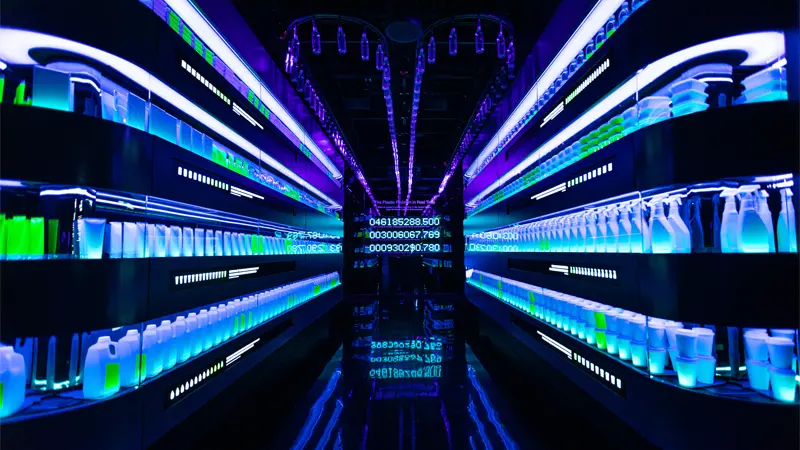
Room 5: Solutions
The fifth and final room ignites action and hope, showcasing our collective power for change with the visuals emphasize unity in making a difference. A plastic calculator highlights individual footprints, revealing the significance of seemingly small actions. Another exhibit wall showcases inventive solutions like shoes made from plastic waste, while another suggests local engagement like contacting elected officials and signing up for local beach clean-ups.
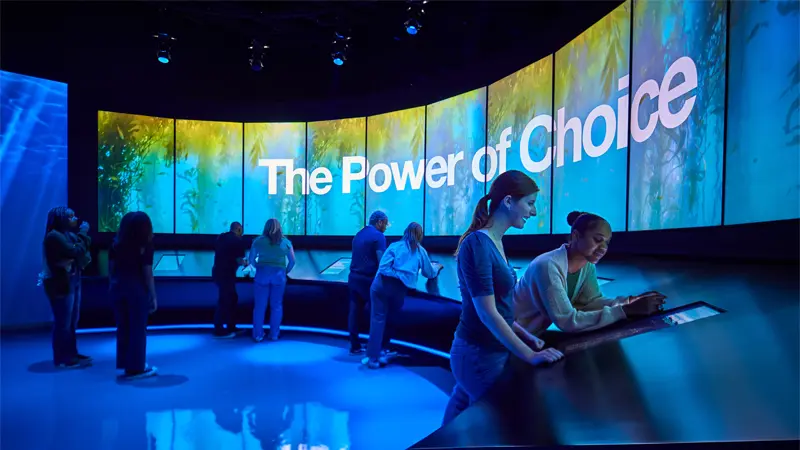
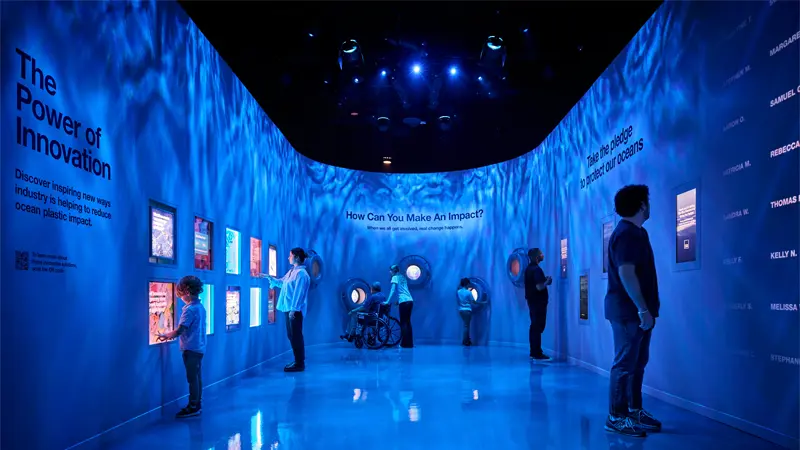
Finally, a pledge wall allows personal commitments with names displayed.
While the challenges to overcome this issue may seem daunting, the Blue Paradox exhibit on plastic pollution crisis is an example of how SC Johnson is working to highlight and mitigate the impacts that plastic waste can have. A more sustainable world starts with each one of us. We must collectively explore ways to reduce plastic waste. Whether it’s by using refills to reusing containers to advocating for policy change, no effort is too small because every action matters.
Together, we can make big waves in the fight against plastic pollution and turn the tide together At the end of the day, we don’t need a million people being perfect, but we need a million people trying.